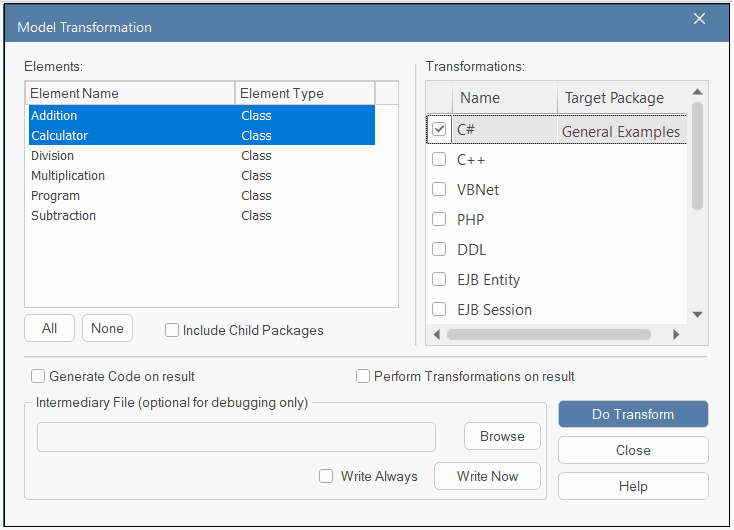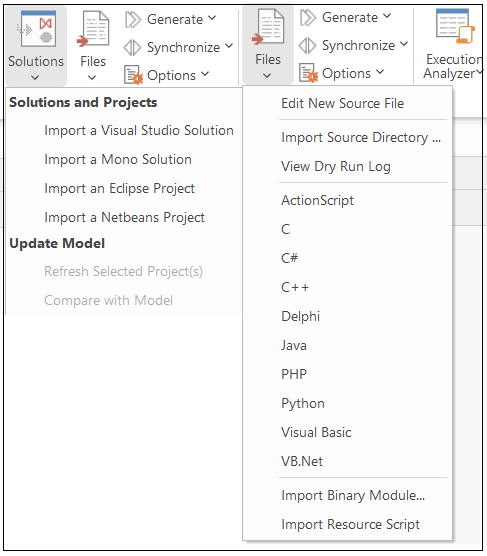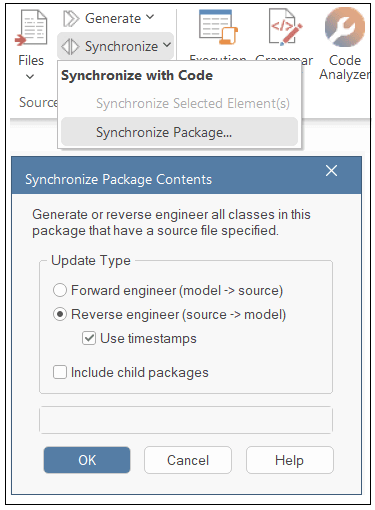A persistent issue in contemporary software engineering is the disconnect between architectural design and concrete implementation. While architects describe systems through structural and behavioural models, developers realize those ideas in source code on specific platforms. Sparx Enterprise Architect (EA) addresses this handoff with comprehensive Code Engineering capabilities that keep both perspectives aligned.
This overview details how EA enables forward engineering, reverse engineering, model-to-model transformations, and continuous model–code synchronisation.
Forward Engineering with Language-Aware Generation
EA produces compilable code directly from UML artifacts and ships with generators for a wide range of languages, including C, C++, Java, and C#.
- Generated files establish a scaffolding for projects, giving teams a consistent starting point.
- The output integrates seamlessly with common IDEs – such as Visual Studio and Eclipse – so implementation can continue without friction.
- Generation behaviour is governed by the Code Template Framework, allowing organisations to adapt templates to internal style guides, naming rules, and architectural conventions.

Sparx EA generates code from single elements or packages
Elevating Platform-independent Models into Executable Designs
Teams that begin with Platform-Independent Models (PIMs) can delay technology choices while refining architecture. Using Model-Driven Architecture (MDA) transformations, EA converts PIMs into platform-specific code models (e.g., for C# or Java). Built-in transformation templates provide an immediate path to Platform-Dependent Models (PDMs) and can be extended to reflect domain-specific constructs or patterns.

MDA Transformation
Reverse Engineering from Source and Deployed Artifacts
EA also reconstructs UML class views from existing assets, making it easier to understand inherited or third-party solutions. It parses widely used languages – including C, C++, Java, and C# – and fits naturally into day-to-day development practices.
- Source and solution artifacts from environments like Visual Studio, Mono, Eclipse, and NetBeans can be imported to build an architectural picture of the codebase.
- Even compiled modules (.exe, .dll, .jar) can be analysed, giving architects insight into the composition of deployed components.
This results in living, visual documentation that supports system comprehension, refactoring initiatives, and modernisation programs.
This capability provides teams with visual documentation of existing systems, helping them analyse, refactor, or modernise applications.

Sparx EA IDE and Source Code import
Round-Trip Engineering to Maintain Parity
EA’s round-trip capability keeps diagrams and code from drifting apart. Updates in models can be regenerated into code, and changes detected in the source can be merged back into the model. The outcome is design fidelity over time, ensuring architecture remains authoritative as the software evolves.

Sparx EA Round-trip Sync
Key Benefits of Sparx EA’s Code Engineering Features
- Break down organisational barriers: Align architectural intent with implementation practice.
- Accelerate throughput: Automate generation of code that conforms to established standards.
- Mitigate delivery risk: Maintain a consistent representation across design and code.
- Enable renewal: Recover structure from legacy assets to guide cleanup and re-platforming.
Conclusion
By unifying modelling and implementation workflows, Sparx Enterprise Architect turns design artifacts into operational assets and vice versa. Whether you are generating code, transforming models across abstraction levels, or deriving models from existing binaries and sources, EA preserves a single, coherent view of the system – keeping architecture and implementation synchronised throughout the lifecycle.

